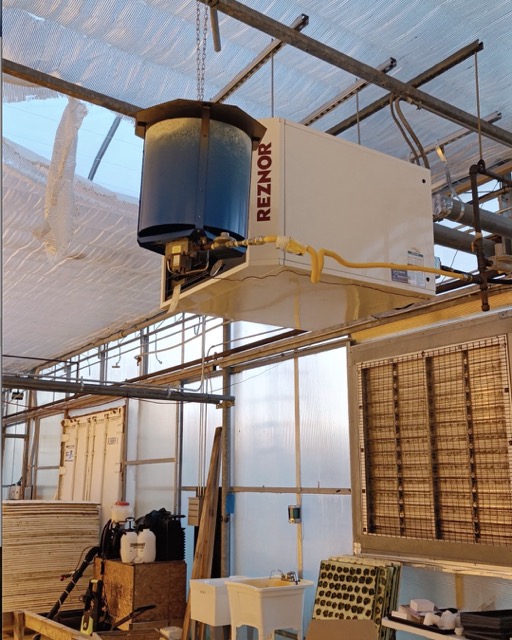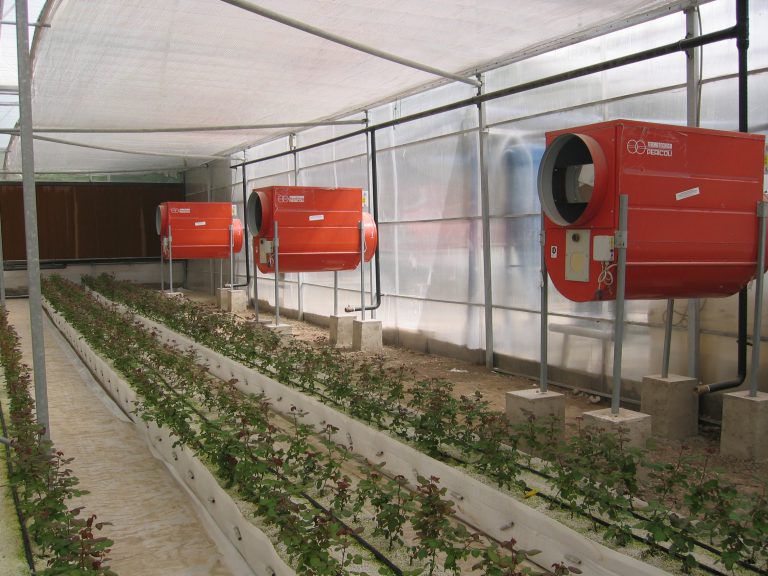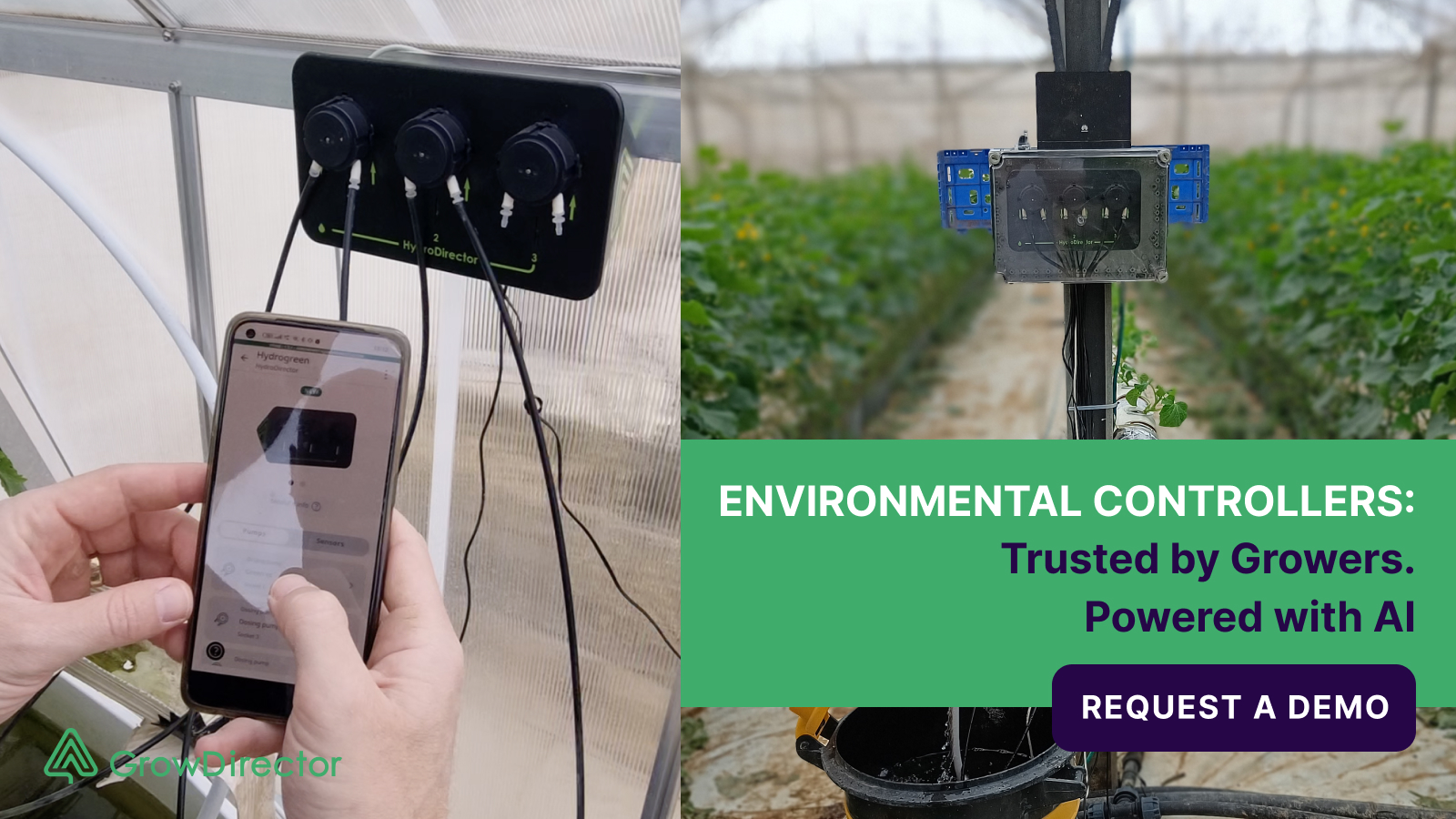
How to Increase Carbon Dioxide Concentration in a Greenhouse: A Commercial Grower’s Guide
Maximizing yield and accelerating plant growth are constant goals for commercial greenhouse operators. While factors like light, water, temperature, and nutrients are well-understood, one critical element often overlooked or underutilized is carbon dioxide (CO2). Learning how to increase carbon dioxide concentration in a greenhouse can significantly impact plant health and productivity. This guide delves into the science, methods, and practical considerations for commercial growers looking to optimize their CO2 levels.
What is the main source of carbon dioxide for plants?
Carbon dioxide is a cornerstone of plant life. Plants use CO2, water, and light energy to create sugars (their food) through a process called photosynthesis. This process is fundamental:
In the natural outdoor environment, the main source of carbon dioxide for plants is the Earth’s atmosphere, which contains approximately 400 to 450 parts per million (ppm) of CO2. Plants absorb this CO2 through small pores in their leaves called stomata. In enclosed environments like greenhouses, however, this atmospheric CO2 can quickly become depleted, especially during periods of active photosynthesis with ventilation closed. Plant respiration also produces CO2, but often not enough to offset photosynthetic demand during peak growth.
Below natural atmospheric levels (e.g., under 200 ppm), plant growth can be significantly stunted. Increasing CO2 concentration beyond ambient levels, often referred to as CO2 enrichment or carbon enrichment, can dramatically enhance photosynthesis, leading to faster growth, earlier fruiting/flowering, increased yields, and improved plant quality.
Why Increase CO2 in a Commercial Greenhouse?
For commercial growers, the benefits of optimizing CO2 levels translate directly to the bottom line. Research and grower experience consistently show that elevated CO2 levels can lead to:
- Increased Yields: Often reported increases of 20-30% or more depending on the crop and conditions.
- Faster Crop Cycles: Plants grow more quickly, allowing for more harvests per year.
- Improved Plant Vigor and Quality: Stronger stems, larger leaves, and sometimes improved flower/fruit size and quality.
- Enhanced Water Use Efficiency: With more CO2 available, plants may open their stomata less, potentially improving how efficiently they use water.
- Increased Disease Resistance: Healthier, more vigorous plants are often better able to withstand pest and disease pressures.
These benefits make CO2 enrichment a key strategy in intensive commercial greenhouse production, especially for high-value crops.

How to Increase Carbon Dioxide Concentration in a Greenhouse?
Do greenhouses use CO2 generators? Yes, commercial greenhouses commonly use various methods to increase CO2 levels, with co2 generators being one of the most popular and effective options for many operations. The choice of method depends on greenhouse size, budget, crop type, and desired level of control.
Using CO2 Generators for Greenhouse Enrichment
CO2 generators produce CO2 by burning a fuel source, typically natural gas or propane, in a controlled manner.
How does a CO2 generator work? A co2 generator for greenhouse use operates by combusting a hydrocarbon fuel. The byproducts of complete combustion are primarily CO2 and water vapor, along with heat. The generator draws in air, mixes it with the fuel, and burns it. The resulting CO2-rich exhaust is then distributed throughout the greenhouse.
- Pros: Can be cost-effective for larger spaces, also produce heat which can be beneficial in cooler climates (though ventilation is needed to manage excess heat and humidity), provide on-demand CO2.
- Cons: Produce heat and water vapor (can increase humidity), require ventilation (which can vent CO2), require a fuel source, produce small amounts of other combustion byproducts (ensure complete combustion and proper maintenance). Not suitable for all crops or organic certification if the fuel source isn’t approved.
While primarily designed for larger structures, smaller co2 generator for grow tent or small greenhouse use also exist, but commercial operations typically require larger, more sophisticated systems.
Liquid CO2 Generators
Another common method is using liquid CO2 stored in pressurized tanks. The liquid CO2 is vaporized and then distributed as a gas into the greenhouse environment.
- Pros: Pure CO2 (no heat, water vapor, or combustion byproducts), precise control over delivery, suitable for all crop types.
- Cons: Higher upfront cost for tanks and infrastructure, ongoing cost of refilling/delivery, requires safe storage of pressurized tanks.
How to Increase Carbon Dioxide Concentration in a Greenhouse Naturally?
Increasing CO2 naturally typically involves utilizing sources like decomposing organic matter or potentially introducing CO2 from outside air during periods when external levels are higher than internal depleted levels (though this also impacts temperature and humidity). This is generally less practical or effective for maintaining optimal CO2 levels in large-scale commercial operations compared to generators or liquid systems, as the CO2 production is often inconsistent and difficult to control precisely. Some sophisticated systems integrate ventilation strategies to draw in outside air when conditions are favorable for CO2 uptake without negative impacts on temperature or humidity.
Monitoring and Controlling CO2 Levels

Effective CO2 enrichment using CO2 generators requires careful monitoring and control to maintain optimal levels without waste or potential harm. This is where technology plays a crucial role.
A co2 sensor for greenhouse environments is essential. These sensors measure the parts per million (ppm) of CO2 in the air. A reliable c02 sensor provides real-time data, allowing growers to:
- Determine current CO2 levels.
- Activate enrichment systems when levels drop.
- Turn off systems when target levels are reached or when ventilation is necessary (e.g., due to temperature/humidity).
- Log data to understand CO2 fluctuations and system performance over time.
Integrating co2 sensor for greenhouse data with environmental control systems (often part of broader greenhouse software or cultivation software) allows for automated CO2 dosing based on light levels, temperature, ventilation status, and target ppm. This is a key component of smart farming, ensuring resources are used efficiently and plants receive consistent, optimal conditions. Some advanced systems leverage what might be termed an AI agronomist functionality to predict CO2 needs based on plant growth models and environmental data.
How Much CO2 Should I Give My Plants?
The optimal CO2 level for plants in a greenhouse typically ranges from 800 ppm to 1500 ppm, depending on the specific crop, light intensity, temperature, and other environmental factors. Levels significantly above 1500 ppm are often not beneficial and can potentially be harmful to plants and unsafe for humans.
It’s crucial to research the specific CO2 requirements for the crops you are growing. Different plants have different saturation points for CO2 uptake. Providing CO2 enrichment when lights are on is key, as plants only use CO2 during photosynthesis. Enriching at night when plants respire is wasteful.
| Crop Type | Recommended CO2 Concentration (ppm) | Notes |
| Most Greenhouse Crops (General) | 1000 – 1300 | Under ideal circumstances |
| Most Greenhouse Crops (General) | 800 – 1000 | Can make a significant difference; Positive response up to 1800 ppm |
| Tomato | 800 – 1200 | Photosynthesis saturated above 1200 ppm |
| Tomato | 300 – 1000 | Recommended range |
| Tomato Seedlings | 800 – 1000 | Recommended after seedlings are established |
| Tomato, Cucumber, Pepper (Seedlings) | 800 – 1000 | For raising seedlings |
| Cucumber | 800 – 1000 | During spring and summer |
| Cucumber | 500 – 600 | At the start and end of the day in low light |
| Cucumber, Sweet Pepper, Tomato | 1000 – 1500 | Demonstrated to improve yields |
| Bell Pepper (Colored) | 1000 – 1500 | Amount required |
| Bell Pepper (Colored) | 800 – 1200 | When ambient humidity is set to 75-80% |
| Lettuce | 800 | For greatest biomass and leaf number (under specific light/temp) |
| Lettuce | 500 – 800 | Lower level recommended |
| Lettuce | 1000 | When vents are closed on a sunny day |
| Lettuce | 600 – 700 | When vents are closed on a cloudy day |
| Strawberry | 1000 – 1500 | Typical range applied in greenhouses |
| Strawberry | 600 | Showed promoted soluble solid accumulation and vitamin C |
| African Violets | 500 – 800 | Even lower levels recommended |
| Gerbera Varieties | 500 – 800 | Even lower levels recommended for some varieties |
Safety Considerations for CO2 Enrichment Using CO2 Generators
Safety is paramount when working with elevated CO2 levels. While CO2 is not toxic at the levels used for plant enrichment, it displaces oxygen.
- Ventilation: Ensure adequate ventilation is possible and operational.
- Monitoring: Always use reliable co2 sensor for greenhouse environments with alarms that trigger if levels exceed safe thresholds for human entry.
- Warning Signs: Post clear warning signs indicating CO2 enrichment is in use.
- Training: Ensure staff are trained on the risks and safety procedures.
- Generator Safety: If using co2 generators, ensure proper installation, maintenance, and ventilation to prevent the buildup of harmful byproducts like carbon monoxide.
Commercial grower forums often highlight the importance of investing in quality sensors and reliable safety protocols, sometimes sharing cautionary tales about inadequate monitoring.

Choosing the Right Method How to Increase Carbon Dioxide Concentration in a Greenhouse
Selecting between co2 generators, liquid CO2, or considering natural methods (though less common for primary enrichment in commercial settings) requires careful consideration:
- Scale: Generators are often more cost-effective for large greenhouses. Liquid CO2 can be more manageable for smaller to medium operations or where pure CO2 is essential.
- Cost: Evaluate the upfront cost of equipment vs. ongoing fuel/refill costs.
- Crop Needs: Some sensitive crops might benefit more from the purity of liquid CO2.
- Existing Infrastructure: Consider your current heating, ventilation, and control systems.
- Sustainability Goals: Evaluate the carbon footprint of fuel sources vs. the production and transport of liquid CO2 for your climate smart agriculture objectives.
Many growers on forums discuss weighing the pros and cons, often seeking advice on sizing co2 generators for greenhouse spaces or comparing quotes for liquid CO2 contracts. Reviews of co2 sensor for greenhouse applications often focus on accuracy, reliability, and ease of integration with existing environmental controls.
Conclusion: Optimizing Growth with CO2 Enrichment
Understanding how to increase carbon dioxide concentration in a greenhouse is a vital strategy for commercial growers aiming for higher yields, faster cycles, and improved plant quality in 2025 and beyond. While traditional methods focus on light, water, and nutrients, optimizing atmospheric CO2 levels is a proven path to unlocking greater photosynthetic potential.
Whether through the controlled combustion of co2 generators, the precision of liquid CO2 systems, or integrating advanced monitoring via a co2 sensor for greenhouse automation, implementing CO2 enrichment requires careful planning, investment, and a strong focus on safety.
By integrating reliable technology like greenhouse software that leverages data from a c02 sensor, growers can precisely manage CO2 levels, minimize waste, and achieve consistent, optimal growth conditions. This strategic approach to environmental control is a key component of modern smart farming and contributes significantly to building a more productive and resilient smart greenhouse. While the upfront investment requires careful consideration, the potential for increased profitability and improved crop performance makes CO2 enrichment a compelling practice for serious commercial growers.
